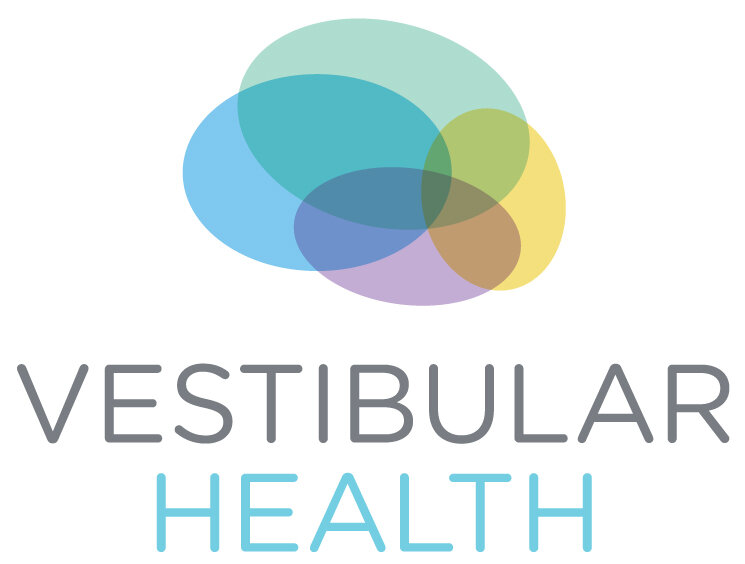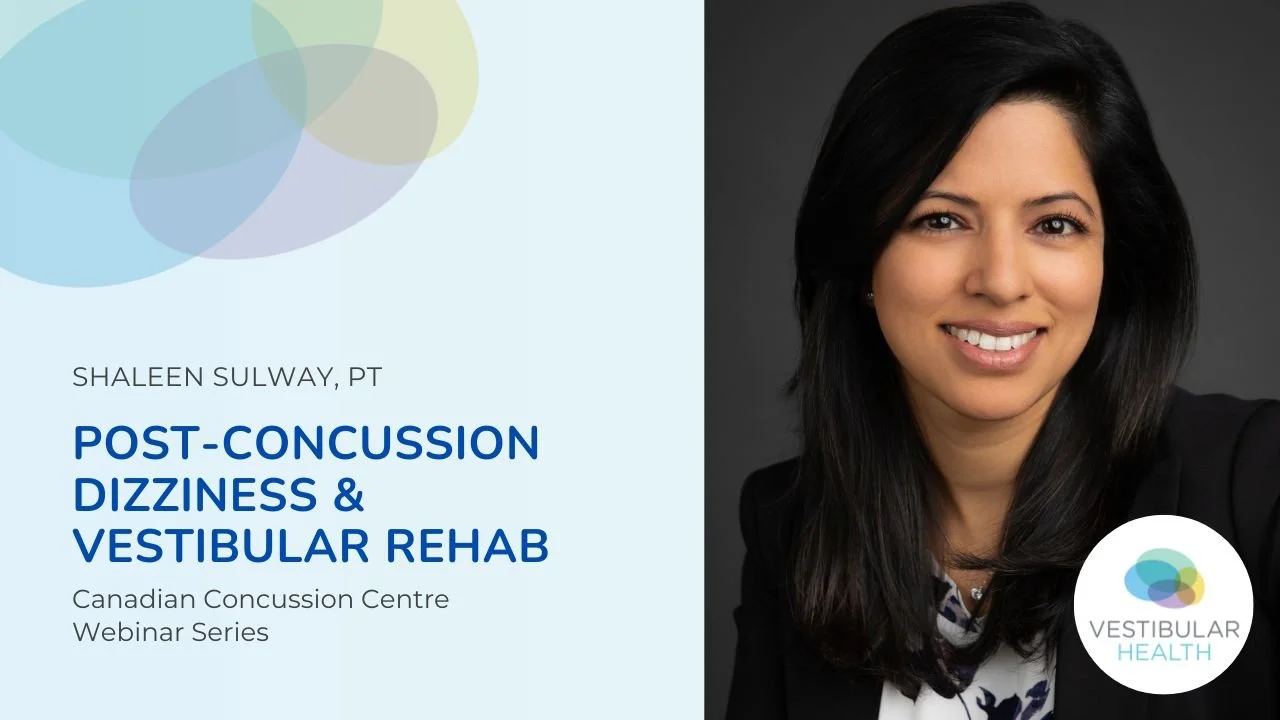Post-concussion dizziness & vestibular rehabilitation
Dizziness is experienced by up to 80% of people after a head injury, and dizziness early on after concussion is a risk factor for prolonged recovery. Shaleen Sulway is a featured speaker for the Canadian Concussion Centre Webinar Series, presenting on the role of vestibular rehabilitation in assessing and treating post-concussion dizziness.
Watch Shaleen’s talk here:
Key concepts from this presentation
Vestibular symptoms include dizziness, vertigo (illusion of movement of yourself or your surroundings), and balance problems. Vestibular problems can cause visual symptoms such as oscillopsia - blurring or unsteady vision with head movements, or a ‘lag’ between head and eye movements. Vestibular dysfunction can also lead to visual motion sensitivity and visual dependence for balance. This can make it difficult to tolerate seeing movement around you, or can make it hard to keep your balance in the dark or with your eyes closed.
The vestibular system includes the inner ear balance organs (the semicircular canals and otoliths), the vestibular nerve (which sends signals from the ear to the brain), and the brain. Head injury can lead to problems in the inner ear balance organs or vestibular nerve - dysfunction in the peripheral vestibular system. Concussion can also lead to problems in the brain pathways responsible for processing and integrating balance signals - dysfunction in the central vestibular system.
The most common causes of vestibular symptoms after concussion can be effectively addressed by vestibular rehabilitation:
Benign Paroxysmal Positional Vertigo (BPPV) results in brief episodes of vertigo triggered by position changes, often with associated nausea and imbalance. BPPV is caused by calcium carbonate crystals that are out of place and moving within your inner ear. This condition is common after head trauma, and is usually very effectively treated.
Vestibular hypofunction after head injury can be due to damage to the inner ear balance organs or vestibular nerve. This causes a loss of the vestibulo-ocular reflex (VOR) which can lead to oscillopsia and imbalance with head movement. Vestibular rehabilitation physiotherapy can improve symptoms by helping train your brain to compensate for loss of vestibular function, using specific eye-head movement exercises.
Persistent Postural Perceptual Dizziness (PPPD) causes prolonged dizziness, unsteadiness, or non-spinning vertigo. PPPD often causes sensitivity to movements of your own head or body, and sensitivity to complex visual stimuli. Symptoms are often triggered by visually busy environments like grocery stores, or with scrolling or seeing movement on screens. Dysfunction in the vestibular system can lead to over-reliance on vision for balance. This dependence on vision can lead to symptoms of visual motion sensitivity.
Comprehensive assessment is very important to figure out what may be causing your vestibular symptoms. Having an accurate diagnosis helps determine what treatment strategies and exercises will be most effective. If you have persistent symptoms of dizziness, vertigo, or imbalance after concussion, consider an assessment with a physiotherapist with advanced training in vestibular rehabilitation.
Book an appointment with one of our expert physiotherapists.
More videos from the Canadian Concussion Centre Webinar series

